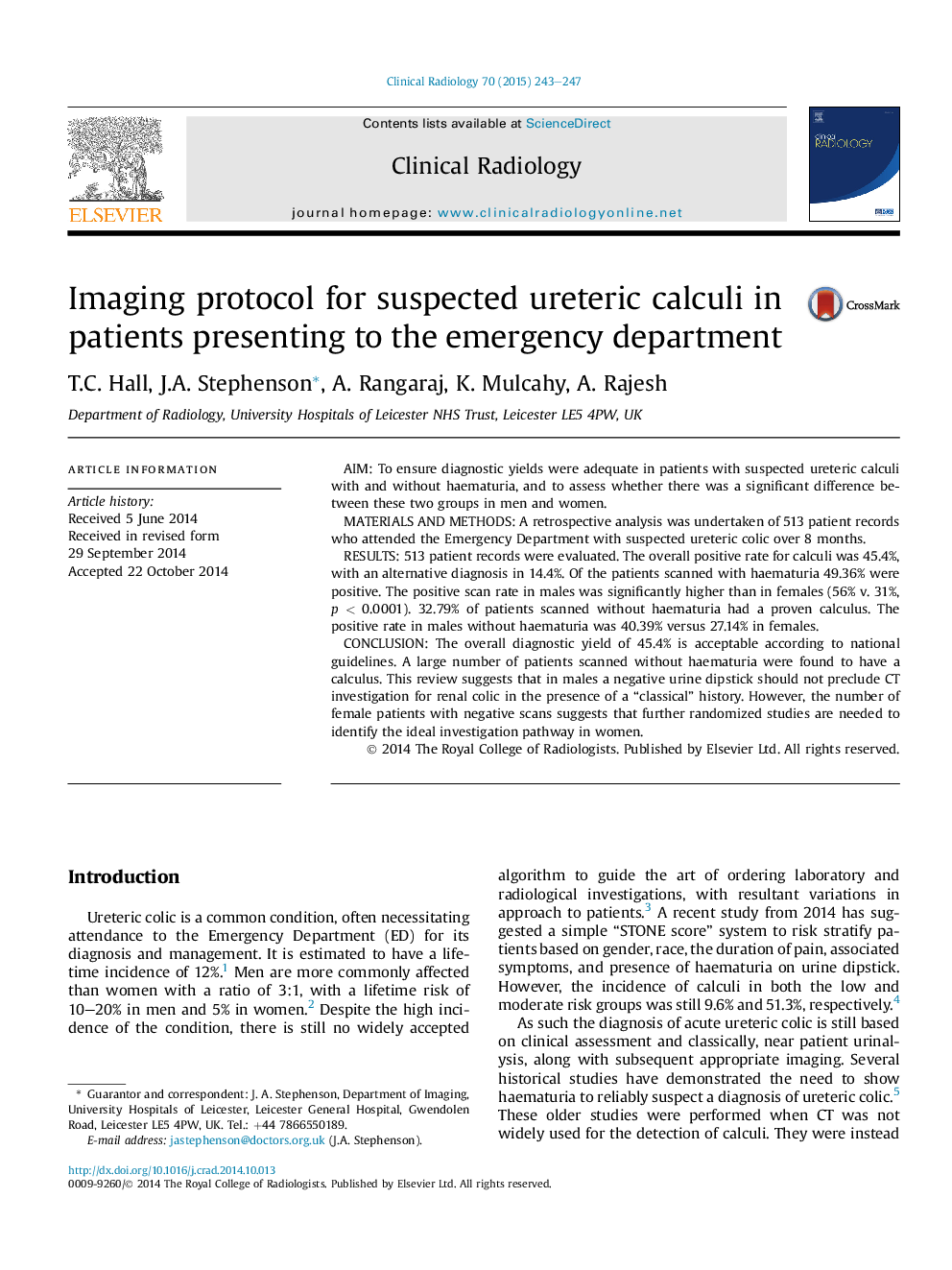| Article ID | Journal | Published Year | Pages | File Type |
|---|---|---|---|---|
| 3981578 | Clinical Radiology | 2015 | 5 Pages |
•Review CTKUB diagnostic yields in patients presenting to the ED with loin pain.•We examine gender differences and whether haematuria is obligatory for CT investigation.•The positive scan rate in males was significantly higher than in females.•The positive rate in males without haematuria was 40.4%.•Diagnostic yields in females were low with or without haematuria.
AimTo ensure diagnostic yields were adequate in patients with suspected ureteric calculi with and without haematuria, and to assess whether there was a significant difference between these two groups in men and women.Materials and methodsA retrospective analysis was undertaken of 513 patient records who attended the Emergency Department with suspected ureteric colic over 8 months.Results513 patient records were evaluated. The overall positive rate for calculi was 45.4%, with an alternative diagnosis in 14.4%. Of the patients scanned with haematuria 49.36% were positive. The positive scan rate in males was significantly higher than in females (56% v. 31%, p < 0.0001). 32.79% of patients scanned without haematuria had a proven calculus. The positive rate in males without haematuria was 40.39% versus 27.14% in females.ConclusionThe overall diagnostic yield of 45.4% is acceptable according to national guidelines. A large number of patients scanned without haematuria were found to have a calculus. This review suggests that in males a negative urine dipstick should not preclude CT investigation for renal colic in the presence of a “classical” history. However, the number of female patients with negative scans suggests that further randomized studies are needed to identify the ideal investigation pathway in women.
